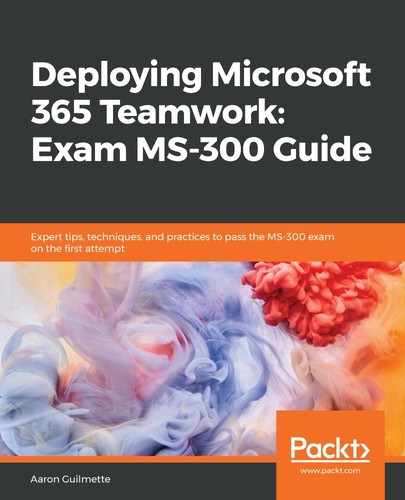Teams conducts most of its network communication over port TCP 443 (HTTPS) to the Office 365 services. However, there are a few additional TCP and UDP ports that may be necessary, depending on the type of activity being performed. For current network requirements, see the Office 365 URL and IP address ranges page at https://docs.microsoft.com/en-us/office365/enterprise/urls-and-ip-address-ranges.
The Teams desktop application must be able to communicate with the Office 365 identity platform for authentication, the Exchange endpoints for calendaring, and SharePoint Online for file collaboration. Additionally, if other Office 365 services are consumed from within the Teams desktop client (such as Stream or Planner), computers will need to be able to reach those endpoints as well. Finally, if any third-party bots, connectors, or plugins are deployed, the Teams client will need to communicate with the networks providing those services.
Microsoft support typically uses the free Fiddler (http://www.telerik.com/fiddler) and Wireshark (http://www.wireshark.org) tools, as well as the browser's built-in Developer Tools, when troubleshooting network communications issues.
Normally, you won't use network tracing tools such as Fiddler or Wireshark for troubleshooting unless either directed by Microsoft support or something in the Teams logs indicates communication errors.
